2020 Nissan Rogue SL Is the Camry of Crossovers
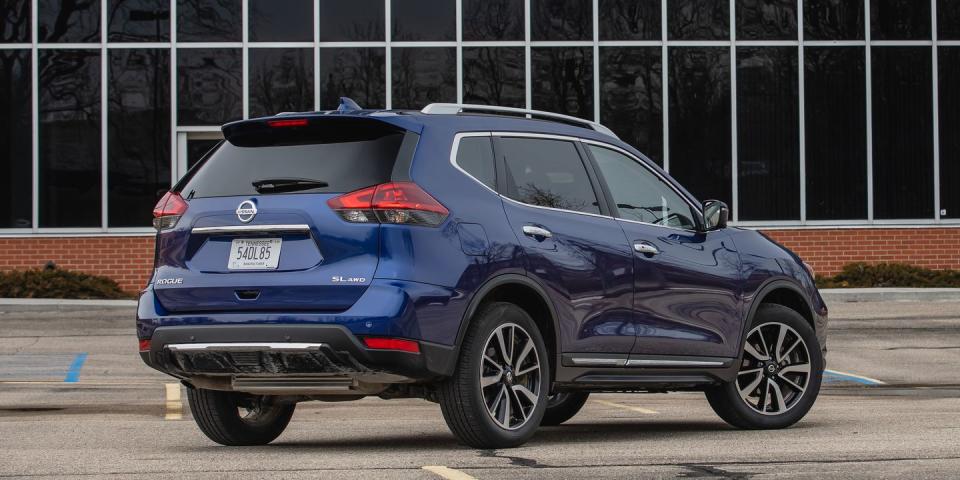
Ten years ago, lazy auto writers used the Toyota Camry as shorthand for anodyne transportation, a car for people who think of cars as appliances. But then the Camry went and got sneaky fun on us, ripping from zero to 60 mph in 5.7 seconds and offering a TRD package and summer tires. Which vehicle, then, is now the new stand-in for all inoffensive mass-market machinery, a vehicle for people who'd rather be riding in the back seat of a Lyft that smells like Febreze? We nominate the Nissan Rogue.
Like the Camry of yore, the Rogue is pleasant and well-executed and absolutely forgettable from a driving standpoint. This is an intentional move on Nissan's part. Nissan knows how to build interesting cars. But the company that gave us the GT-R figures that the Rogue audience doesn't want a variable-compression turbocharged engine (Altima) or a NISMO tune (the old Juke) or a transmission with real gears (Armada). Thus, the Rogue moseys hither and thither via the modest propulsive efforts of a 2.5-liter, 170-horsepower inline-four paired with a continuously variable automatic transmission (CVT). Last year, Nissan sold 350,447 Rogues, making it the company's best seller. See? Not everyone cares about horsepower or knows how a transmission should behave.
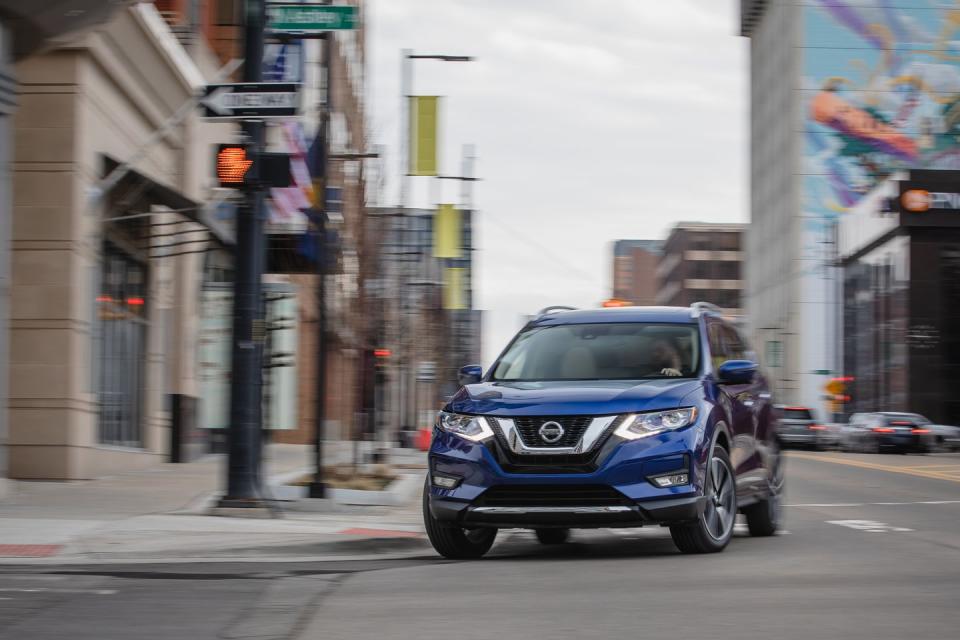
Also, Nissan fudges that sales number by some unknown amount, since it includes both the Rogue and Rogue Sport, a vehicle that has a different body and engine and wheelbase and price and is actually a different car. Nonetheless, there are a lot of Rogues out there. And that's because the rest of the package works quite well.
The Rogue SL's interior, leather seats with a two-tone dash, is attractive and functional. There's no trendy iPad-on-the-dash touchscreen, but there are hard buttons for oft-used features such as climate control and seat heaters. Those heaters offer low and high settings, with the latter apparently calibrated to also work as a pancake griddle. The square-bottomed steering wheel feels good, even if it pledged a code of omertá [Look it up—Ed.] to the front contact patches.
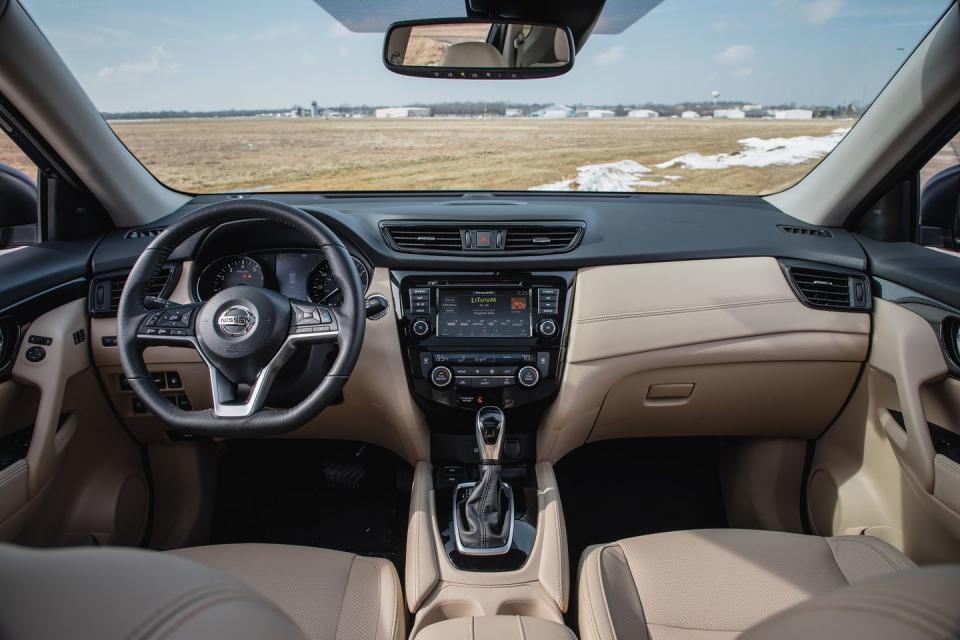
In keeping with its ambition to be a helpful and unobtrusive Jeeves of a crossover for people who really don't care about driving, the SL trim level comes standard with a comprehensive list of electronic driver-assistance aids. There's automatic braking in forward and reverse (with pedestrian detection up front), adaptive cruise control, lane-keeping assist, and a blind-spot warning system. Two other clever features: If the car notices you open and close a rear door before you set off but then fail to repeat the process when you park, it'll plaintively chirp its horn to remind you that, you know, you might've forgotten your tuba on the back seat. And when you're airing up the tires, it'll sound the horn to let you know when you've hit the right air pressure. Honk if you're helpful!
The Rogue's all-wheel-drive system can split torque evenly front to rear, but under constant-speed circumstances it sends all the power to the front wheels. Given the peaceable power delivery, all-wheel drive really only comes into play in low-traction situations, like snow—when you're doing zero to 60 mph in 9.4 seconds, wheelspin off the line isn't much of a problem. At least the Rogue's AWD system only imparts a 119-pound weight penalty on the SL. Whether front- or all-wheel drive, the Rogue is rated to tow a curiously specific (and decidedly low) 1,102 pounds. Or, if you like round numbers, 500 kilograms.
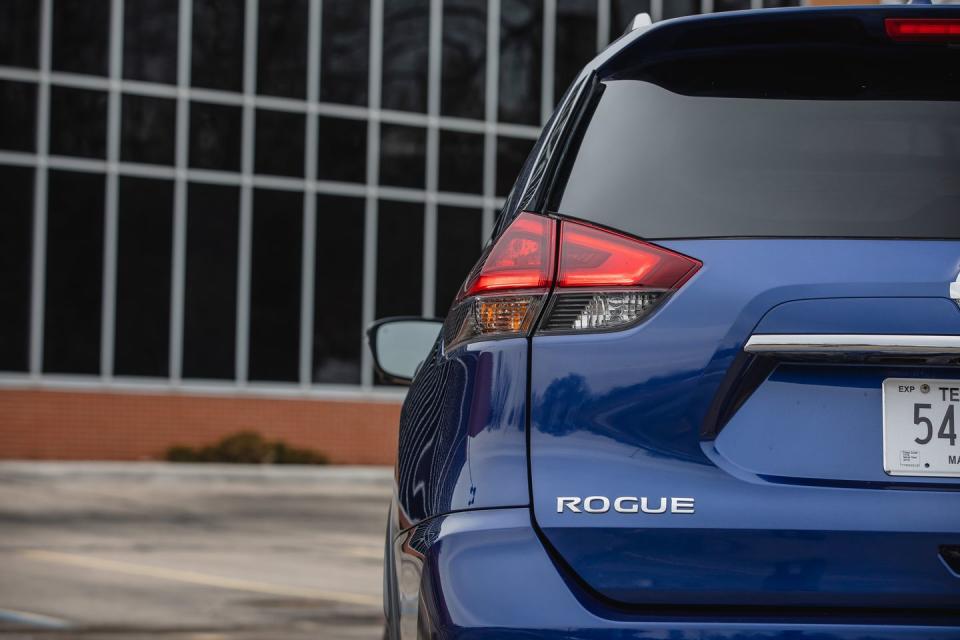
Some cars can match their EPA highway rating on our steady 75-mph highway driving loop, but the Rogue's 26-mpg score on that test falls a big 6 mpg short of its EPA estimate. That seems a reflection of the underhood strain at higher speeds rather than, say, any aerodynamic deficiency. The Rogue's 0.34 coefficient of drag is respectably slippery, and Nissan obviously paid attention to any wind-cheating advantage it could muster. For instance, when you're following a Rogue, that metal thing you see hanging underneath the car is the "muffler spoiler." Underbody aero, yo.
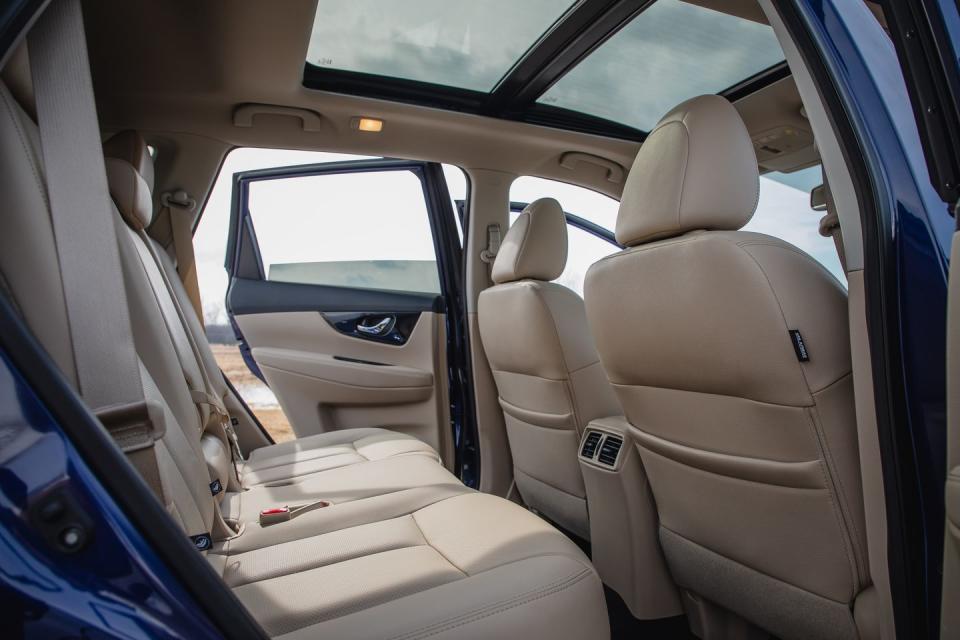
The top-shelf Rogue SL is basically loaded, with the $1,850 SL Premium package (which includes a dual-panel moonroof and LED headlights) the only real option. Adding that package brought our as-tested price to $36,095, a number that seems benchmarked to all the likely suspects in this class. But some of the other players in the mid-$30,000 crossover class offer turbocharged engines paired to transmissions with real gears, a combination that is both quicker and more fun to drive. An all-wheel-drive Volkswagen Tiguan runs zero to 60 mph in 8.3 seconds. The 1.5-liter Ford Escape EcoBoost does it in 7.7. And if, like us, you skip a few convenience options to splurge on power, the 252-horsepower Chevrolet Equinox 2.0T and 250-hp Escape 2.0T can also land in the Rogue's price neighborhood. The Chevy beats the Rogue to 110 mph by an incredible 24 seconds, and the Escape gets there 25.2 seconds faster than the Rogue.
But then again, who's taking a Rogue to 110 mph? Not Rogue drivers. They're blissing out on quarter-throttle takeoffs, serene CVT smoothness, and an interior that doesn't require you learn a new interactive dance just to change the radio station. If you care about how long it takes to get to 110 mph, you're probably not a Rogue buyer. But you ought to check out a TRD Camry.
You Might Also Like

 Yahoo Autos
Yahoo Autos 